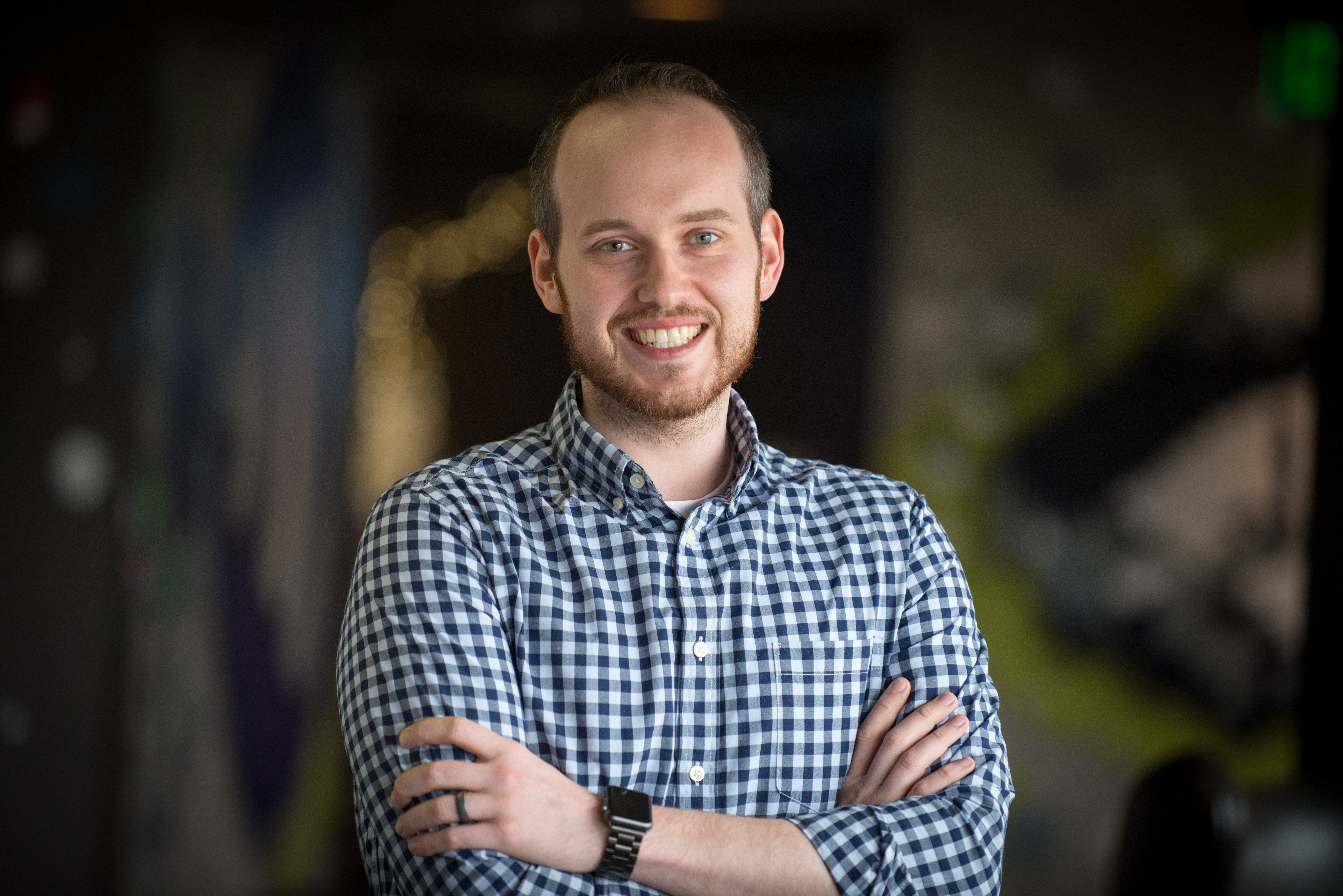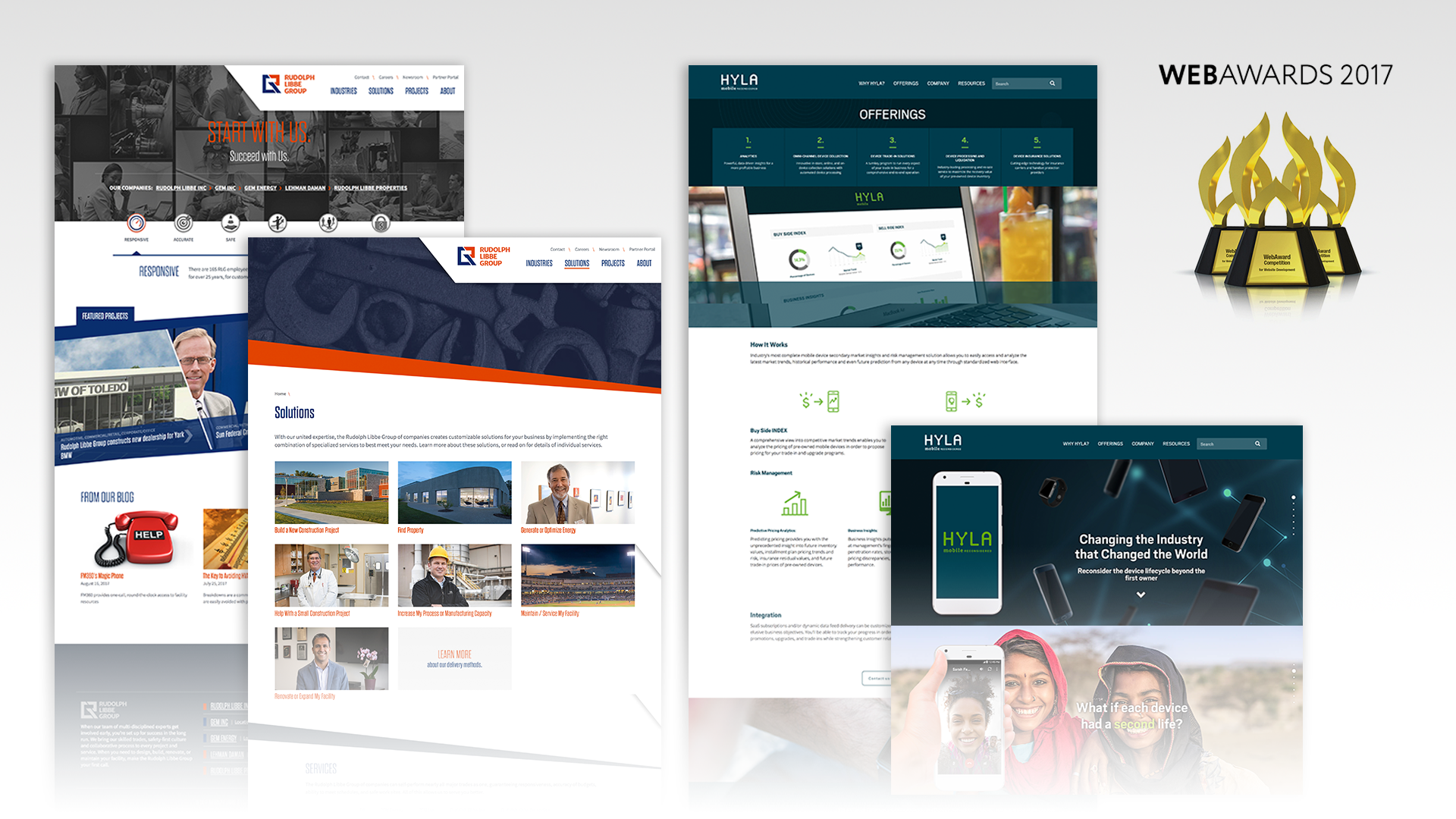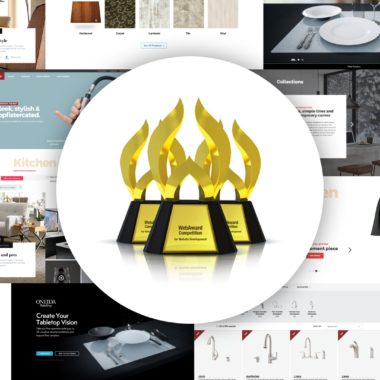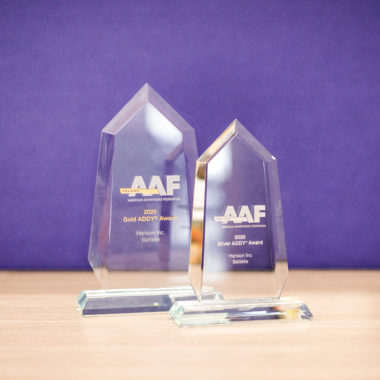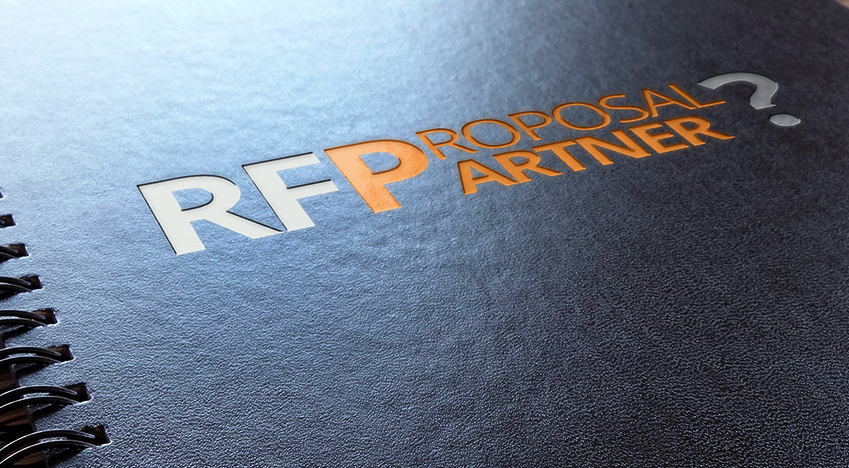What We Know Now: Chas Ryder
What have you learned in the course of your career? That’s what we’ve been asking Hansonites across our disciplines. Recently, we’ve talked to Market Development Manager Zak Jasinski, Director of Content Strategy Mindy Withrow, and Project Manager Kelly Sullivan. Today, we’re speaking with Chas Ryder, Director of Design.
Sally: Tell us a little bit about your background. You started out at Hanson as a front-end developer, but now you manage the visual design team here at Hanson. How did you get here?
Chas: I’ve always loved how technology and design come together to create experiences. The technology piece has always come easy to me, but I’ve been more focused on how the experience feels, looks, and how the user interacts with it. This is what caused me to pursue a degree in graphic design. Coming out of college, I knew pursuing a career as a front-end designer would allow me to mix my creative and technical passion.
As technology has grown, so have the areas of expertise. The front-end designer role has shifted over time and is commonly referred to as a front-end developer now. While developers still have a great impact on the overall feel of an application, I wanted to be out in front of the design problem a bit more. Shifting more towards the creative side of things allowed me to really define and explore creative solutions while still considering the technical aspects, considering most of what I do is digital.
What’s more, I’ve realized I not only like doing this myself, but I also love empowering other designers to the do the same. When I was given the chance to lead the design team here at Hanson, I was thrilled. I get to talk about creative problems every day and then reach out to a team of very talented designers to brainstorm, ideate, and discover what the potential solution might be.
Sally: So tell us a little about the visual design field. What does it mean to you, and how has it evolved over time here at Hanson?
Chas: We joke that we make the pretty pictures. I think this is a remnant of print design. It doesn’t move. It’s not interactive. We like to use the word static or lacking movement, action, or change. Visual design in the digital sense is completely about movement, action, and change. When I first entered the field, many were trying to migrate from a more traditional medium to a digital one. Most of the time, designs were static. But as people have now grown up around digital interfaces and technology has created more dynamic ways of creating digital tools, this has created a whole new world to design in.
We now have to consider movement, action, and change in everything we do. Sometimes our designs need to work on a tiny mobile phone and a giant tv screen all at the same time. And along with the physical hardware, the mental state of the user has shifted as well. Where before we needed to make a button very bubbly and big so a user knew to click it, we now see interfaces that don’t have buttons at all, yet they are intuitive to swipe, scroll, and gesture around. Digital interfaces have become all the more difficult. This has moved visual design past these static images and into a space that embraces change.
Sally: With that in mind, was there anything in particular that surprised you as you shifted your focus in visual design?
Chas: The user matters more than the design. It’s very easy to get caught up in a design from an aesthetic point of view. It isn’t always fair to take a step back and look at the design overall as one big artistic piece. It’s rare that a user sees anything we work on in whole. I think of that call to action that you have at the bottom of a page. We design a perfect, elegant button with wonderfully sized type and beautiful brand colors, only to come to find out that no one is clicking on it. Someone from the team may suggest we change the button color and bump up the type size, but this will destroy my masterpiece! Sure enough, you do as instructed and users begin clicking as if they can’t get enough. This is putting the user first. Sometimes we create perfect (in our minds) design systems that work wonderfully together and the moments where you need to break out of the system to support the user can be the most critical.
Sally: What do you think are some key qualities of a successful visual designer?
Chas: I just heard someone describe a designer as a person who “naturally explores.” This is a great description of a successful designer. Given any problem, the journey it takes to get you to the solution is so important. A designer isn’t presented a problem only to apply lipstick to it; a successful designer first examines the problem and goes through iterations until they have found one, two, or even six potential solutions. These solutions can then be validated to decide which one does in fact solve the problem in the most appropriate way.
I think a successful designer is always skeptical as well. The moment you assume you are right or it’s complete is the moment you fall flat on your face. What works in one design might not universally apply to all designs. Go back to the bigger, brighter button scenario. A successful designer is always willing to ask themselves, would a bigger brighter button be more effective?
Sally: Given the experience you have now, what’s something you wish you had known when you first started?
Chas: The best option isn’t always the right solution, and the good option isn’t the always worst solution. I’ve learned over time how much value there is in being flexible. I think when you first start you think the best solution is the most time consuming, the most expensive, or the most robust. We commonly look at options in light of good, better, and best. The achiever in me wants the best, thinking the other two are second rate. The problem is there isn’t always a single best solution. If I could go back and approach some problems knowing that choosing the good option could still result in the best solution, I think some of my past work could have been stronger.
Sally: Do you have any advice for people interested in pursuing a career in graphic design?
Chas: Early on in my career, I created digital banner ads. I would work in that tiny space all day long and try to cram in legal copy into the bottom of a leaderboard. This could have been seen as grunt work. But looking back, I gained so much knowledge about basic design principles and how a banner ad can challenge you creatively on so many levels. I remember my algebra teacher who said “you’ll use this someday.” I still don’t buy it because I don’t use algebra every day, but I do put into practice all of the fundamentals I learn from boring banner ads.
Never take for granted the experience you are gleaning from any task, no matter how big or small it might seem. Every task is just adding to your arsenal of tools that you’ll have to pull from later on in your career.
